We investigated the motility of a gastric tube and of grafts of colonic segment or a jejunal segment after total gastrectomy. Motility was monitored using a strain gauge force transducer sutured on the surface of the reconstructed, duodenum and jejunum in mongrel dogs.
The following results were obtained.
Interdigestive migrating complex (IMC) was obsered with the reconstructed organs but not with the gastric tube. The IMC that originated from the graft of the jejunal segment began to propagate to the duodenum. This means that the duodenum and the rest of the intestine were released from the dominates of the stomach in cases with gastric tubes, which preserved a gastroduodenal anatomical connection. In contrast, the grafts of je-junum and colon resulted in a broken anatomical connection.
The gastric tube did not significantly affect the duration of phase II plus phase III (contractile state) in the duodenum and the jejunum ; however both kinds of graft prolonged this period. The presence of the stomach may have acted to suppress the motility of the duodenum and the rest of the intestine in the fasting state.
All of the reconstructions delayed the propagation velocity of phase III.The gastric tube prolonged the postprandial period ; however, both kinds of graft temporarily reduced it.
We speculate that the delay in gastric emptying was due to vagotomy. We believe that graft of the ileo-ascending colon is the best reconstuctive procedure with regard to motility after subtotal esophagectomy or total gastrectomy.
View full abstract
